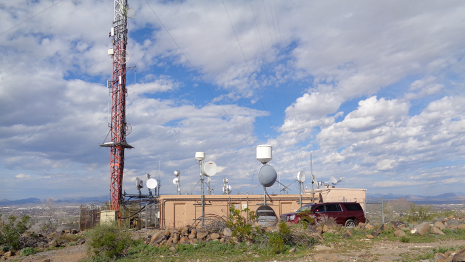Taking ATSC 3.0 Nationwide
Tests on the east and west coast are separate, but do have a collaborative spirit

Out west in Phoenix, Pearl TV along with its other market partners in December 2020 launched a two-node ATSC 3.0 SFN trial on The E.W. Scripps Company-owned KASW.
Back east, Louis Libin, Sinclair Broadcast Group vice president for Spectrum Engineering and Policy, was preparing in late 2020 for a Q1 launch of a new six-node 3.0 SFN test on channel 30 in the Baltimore-Washington, D.C., area that will also include a Sinclair big stick.
The Phoenix SFN test initially looked at the viability of different ATSC 3.0 use cases that rely on single frequency networks. Longer term, testing is designed to help guide broadcasters to optimize future SFN deployments.
Sinclair’s test will look at the basic functionality of an SFN in a limited area using 40W transmitters (200W to 400W ERP), a newly designed, radome-enclosed Dielectric antenna with slant polarization and other technology in a self-contained package that the broadcaster can quickly and easily deploy about four or five miles from each other to blanket markets in the future. Think cell phone network with better than 5G performance (broadcast bits rather than unicast), and you get the picture.
What violates Kipling’s “never the twain shall meet” dictum when it comes to these east and west SFN tests is a common desire on the part of those conducting them to share findings with other broadcasters, whether competitors or not, to make it easier for every broadcaster to succeed with 3.0.
Dave Folsom, retired CTO of Raycom Media and a Pearl TV engineer, says findings will be shared with the industry, including baseline performance compared to that of using different modcods and operational data. “That will be freely distributed and freely shared with everyone, and people can make their own conclusions based on the data,” he said.
Libin’s plans mirror those of Folsom. Saying Sinclair “desperately” wants to share its SFN findings domestically and around the world, Libin identifies a desire to help the industry grow as motivating this magnanimity.
That’s where the TV broadcast industry is as it enters 2021. Whether east or west, north or south, there’s a strong spirit of cooperation and collaboration on the technical side that ultimately will position the front office to make business decisions that lead to success and move their organizations forward.
Get the TV Tech Newsletter
The professional video industry's #1 source for news, trends and product and tech information. Sign up below.
Phil Kurz is a contributing editor to TV Tech. He has written about TV and video technology for more than 30 years and served as editor of three leading industry magazines. He earned a Bachelor of Journalism and a Master’s Degree in Journalism from the University of Missouri-Columbia School of Journalism.

